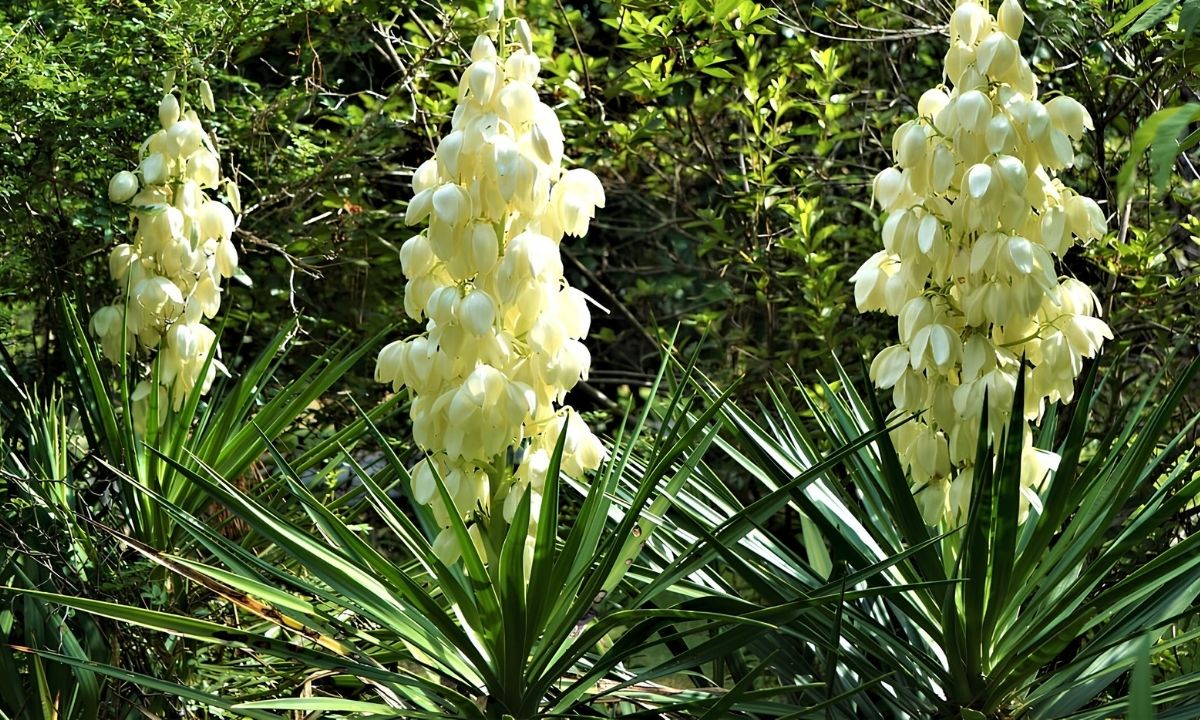
Adam's needle, also known as Yucca filamentosa, is a fascinating plant with a lot to offer. Ever wondered why it's called Adam's needle? This hardy plant, native to the southeastern United States, gets its name from its long, pointed leaves that resemble needles. But there's more to it than just its sharp appearance. Adam's needle is not only drought-tolerant but also boasts beautiful, bell-shaped flowers that bloom in the summer. These flowers attract pollinators like bees and butterflies, making it a great addition to any garden. Plus, it's low-maintenance and can thrive in various soil types. Ready to learn more? Let's dive into 26 interesting facts about this unique plant!
What is Adam's Needle?
Adam's Needle, also known as Yucca filamentosa, is a fascinating plant native to the southeastern United States. This evergreen shrub is known for its striking appearance and resilience. Let's dive into some intriguing facts about this unique plant.
-
Evergreen Beauty: Adam's Needle remains green throughout the year, making it a popular choice for gardens and landscapes.
-
Distinctive Leaves: The plant features long, sword-like leaves that can grow up to 3 feet in length. These leaves have curly white threads along their edges, giving the plant its name.
-
Flower Power: During the summer, Adam's Needle produces tall flower stalks that can reach up to 8 feet high. These stalks are adorned with clusters of creamy white, bell-shaped flowers.
-
Pollination Partners: The flowers of Adam's Needle are primarily pollinated by yucca moths. This mutualistic relationship is vital for the plant's reproduction.
-
Drought Tolerance: Adam's Needle is highly drought-tolerant, making it an excellent choice for xeriscaping or low-water gardens.
Historical Significance
Adam's Needle has a rich history and has been used by various cultures for different purposes. Here are some historical facts about this remarkable plant.
-
Native American Uses: Indigenous peoples used the fibrous leaves of Adam's Needle to make ropes, baskets, and sandals.
-
Medicinal Properties: Some Native American tribes used the roots of the plant to treat various ailments, including arthritis and skin conditions.
-
Colonial America: Early settlers in America adopted the plant for similar uses, appreciating its versatility and resilience.
-
Symbolism: In some cultures, Adam's Needle symbolizes protection and endurance due to its tough, spiky leaves and ability to thrive in harsh conditions.
Growing and Caring for Adam's Needle
If you're interested in adding Adam's Needle to your garden, here are some essential facts about growing and caring for this plant.
-
Sun Lover: Adam's Needle thrives in full sun but can tolerate partial shade.
-
Soil Preferences: The plant prefers well-drained soil and can grow in sandy or rocky conditions.
-
Low Maintenance: Once established, Adam's Needle requires minimal care. It's resistant to pests and diseases, making it a hassle-free addition to any garden.
-
Propagation: The plant can be propagated through seeds or by dividing the root clumps.
-
Cold Hardy: Adam's Needle is hardy in USDA zones 4-10, meaning it can withstand cold temperatures and even some frost.
Environmental Benefits
Adam's Needle isn't just a pretty face; it also offers several environmental benefits. Here are some facts about how this plant contributes to its ecosystem.
-
Erosion Control: The deep root system of Adam's Needle helps prevent soil erosion, making it a valuable plant for stabilizing slopes and embankments.
-
Wildlife Habitat: The plant provides shelter and food for various wildlife, including birds and insects.
-
Air Purification: Like many plants, Adam's Needle helps purify the air by absorbing carbon dioxide and releasing oxygen.
-
Pollinator Friendly: The flowers attract pollinators such as bees, butterflies, and yucca moths, supporting local biodiversity.
Fun Facts
Adam's Needle has some quirky and fun aspects that make it even more interesting. Here are a few fun facts about this unique plant.
-
Name Origin: The name "Adam's Needle" comes from the sharp, pointed tips of the leaves, which resemble needles.
-
Survival Skills: The plant can survive in poor soil conditions where many other plants would struggle.
-
Longevity: Adam's Needle can live for several decades, making it a long-term addition to your garden.
-
Deer Resistant: The tough, spiky leaves deter deer and other herbivores, making it a good choice for gardens in areas with high deer populations.
-
Fire Resistant: The plant's thick, fleshy leaves are resistant to fire, providing some protection in wildfire-prone areas.
-
Edible Parts: While not commonly consumed, the flowers of Adam's Needle are edible and can be used in salads or as a garnish.
-
Cultural References: Adam's Needle has appeared in various works of literature and folklore, often symbolizing resilience and protection.
-
Garden Design: The plant's striking appearance makes it a popular choice for adding texture and visual interest to garden designs.
Final Thoughts on Adam's Needle
Adam's needle, or Yucca filamentosa, is more than just a pretty plant. Its unique appearance, hardiness, and versatility make it a standout in any garden. From its sword-like leaves to its tall flower spikes, this plant is a true survivor, thriving in various conditions with minimal care. It's not just about looks; Adam's needle also offers practical benefits like erosion control and even some medicinal uses. Whether you're a seasoned gardener or just starting out, adding this plant to your landscape can bring both beauty and function. So next time you're planning your garden, consider giving Adam's needle a spot. You'll be rewarded with a plant that's as tough as it is attractive. Happy gardening!
Was this page helpful?
Our commitment to delivering trustworthy and engaging content is at the heart of what we do. Each fact on our site is contributed by real users like you, bringing a wealth of diverse insights and information. To ensure the highest standards of accuracy and reliability, our dedicated editors meticulously review each submission. This process guarantees that the facts we share are not only fascinating but also credible. Trust in our commitment to quality and authenticity as you explore and learn with us.
